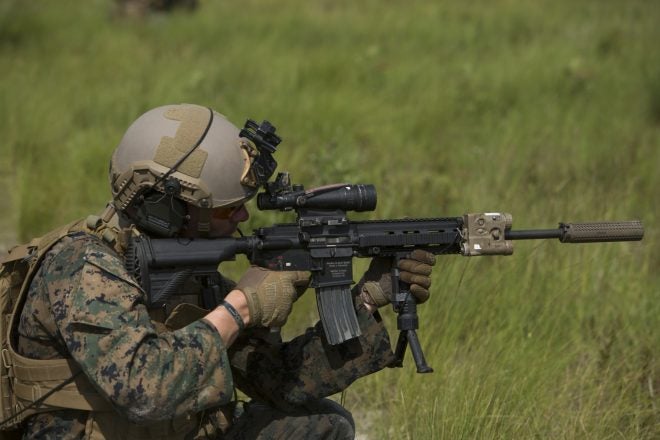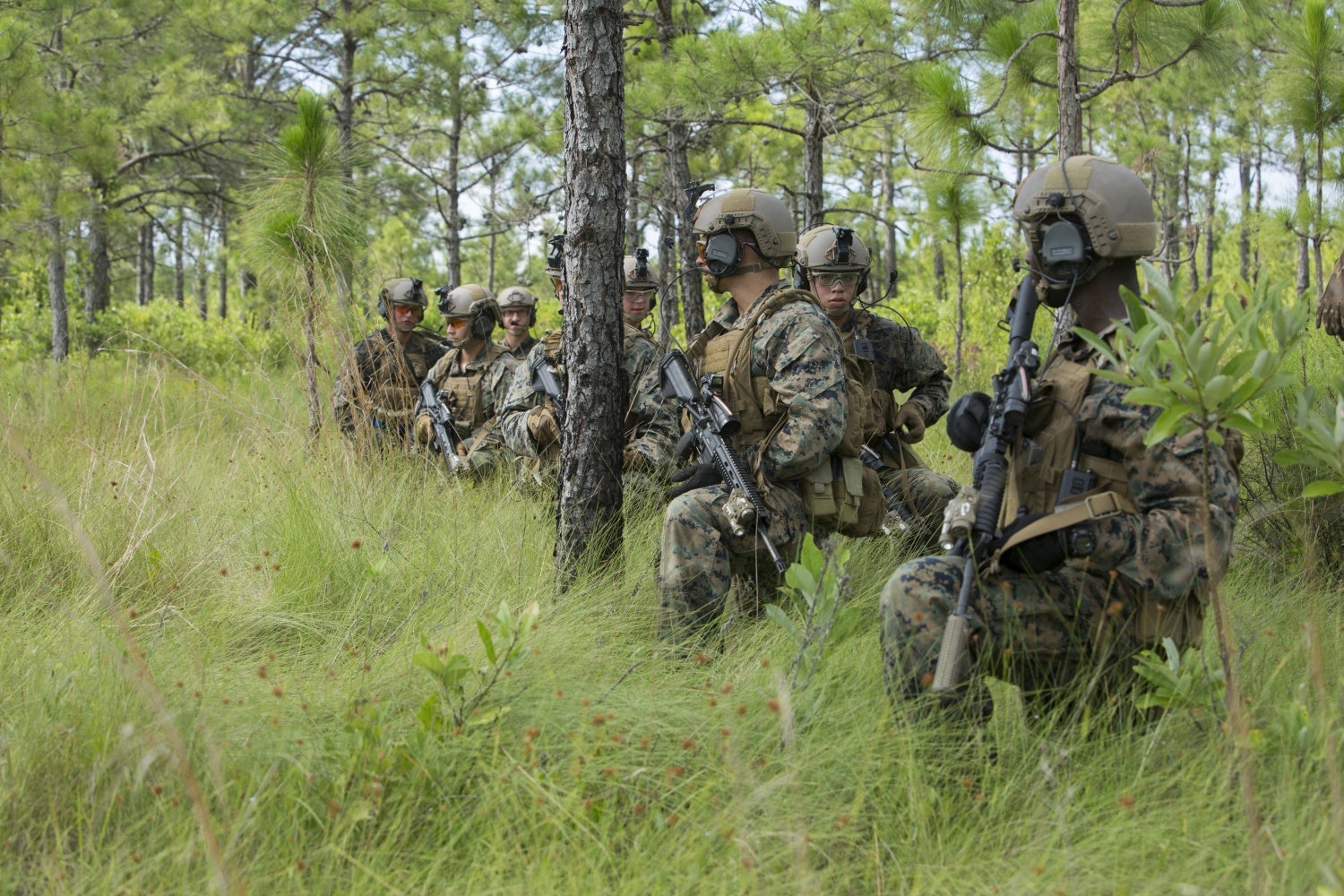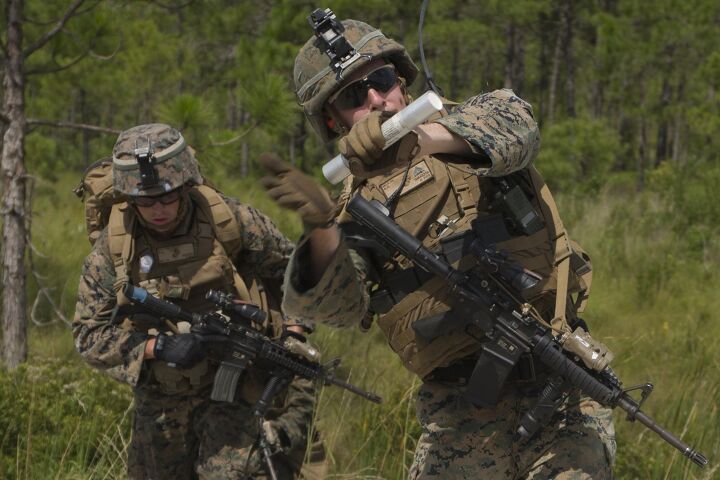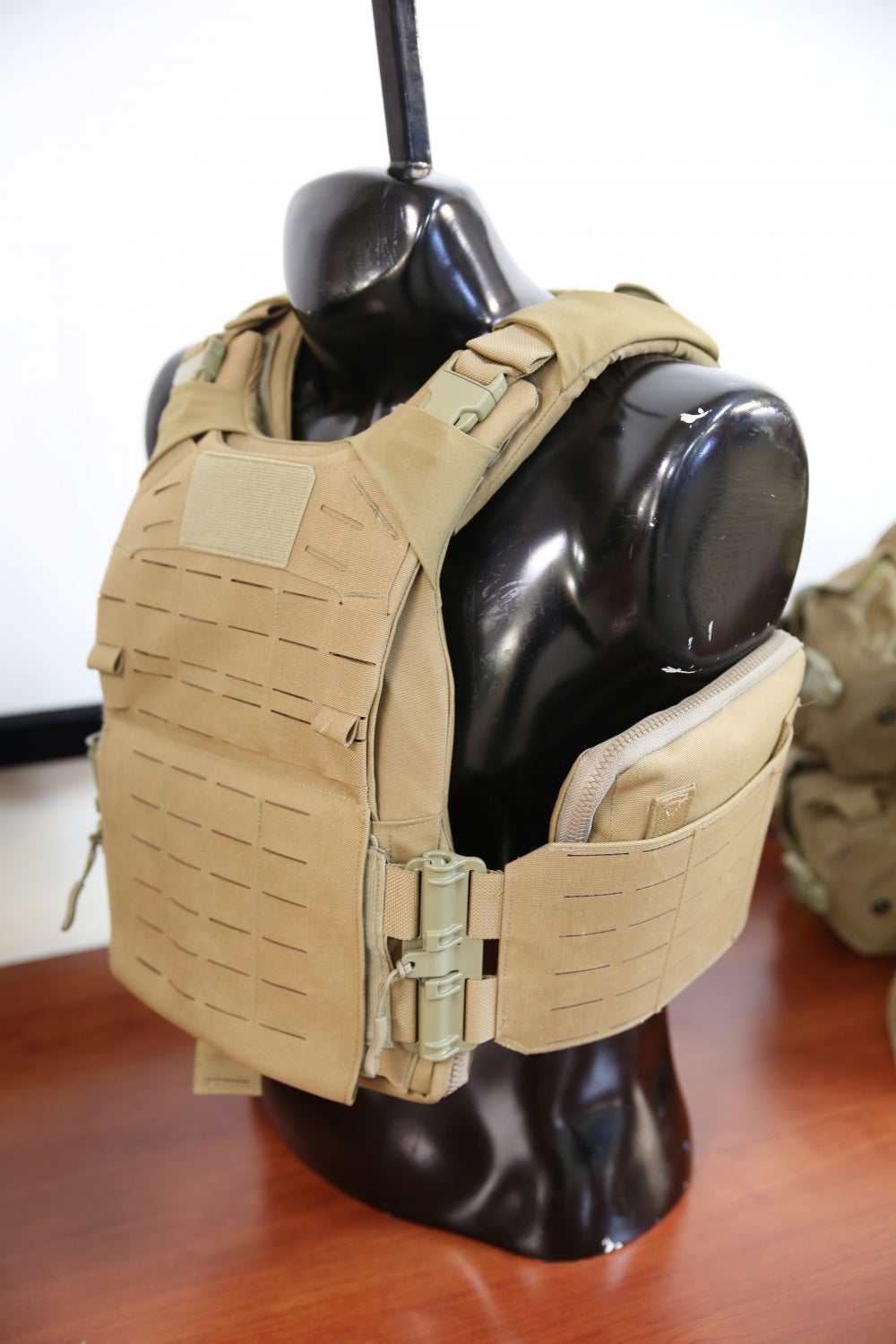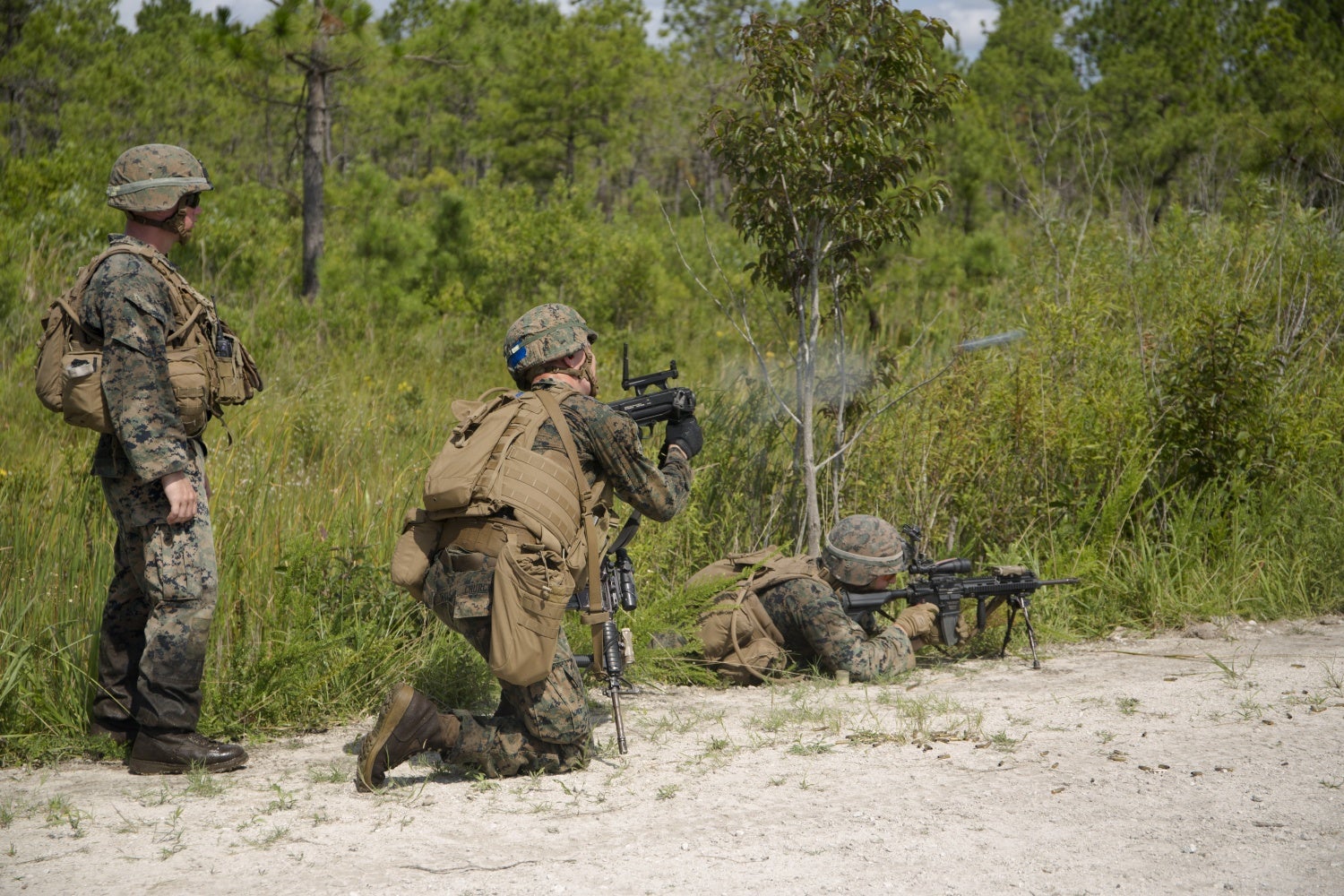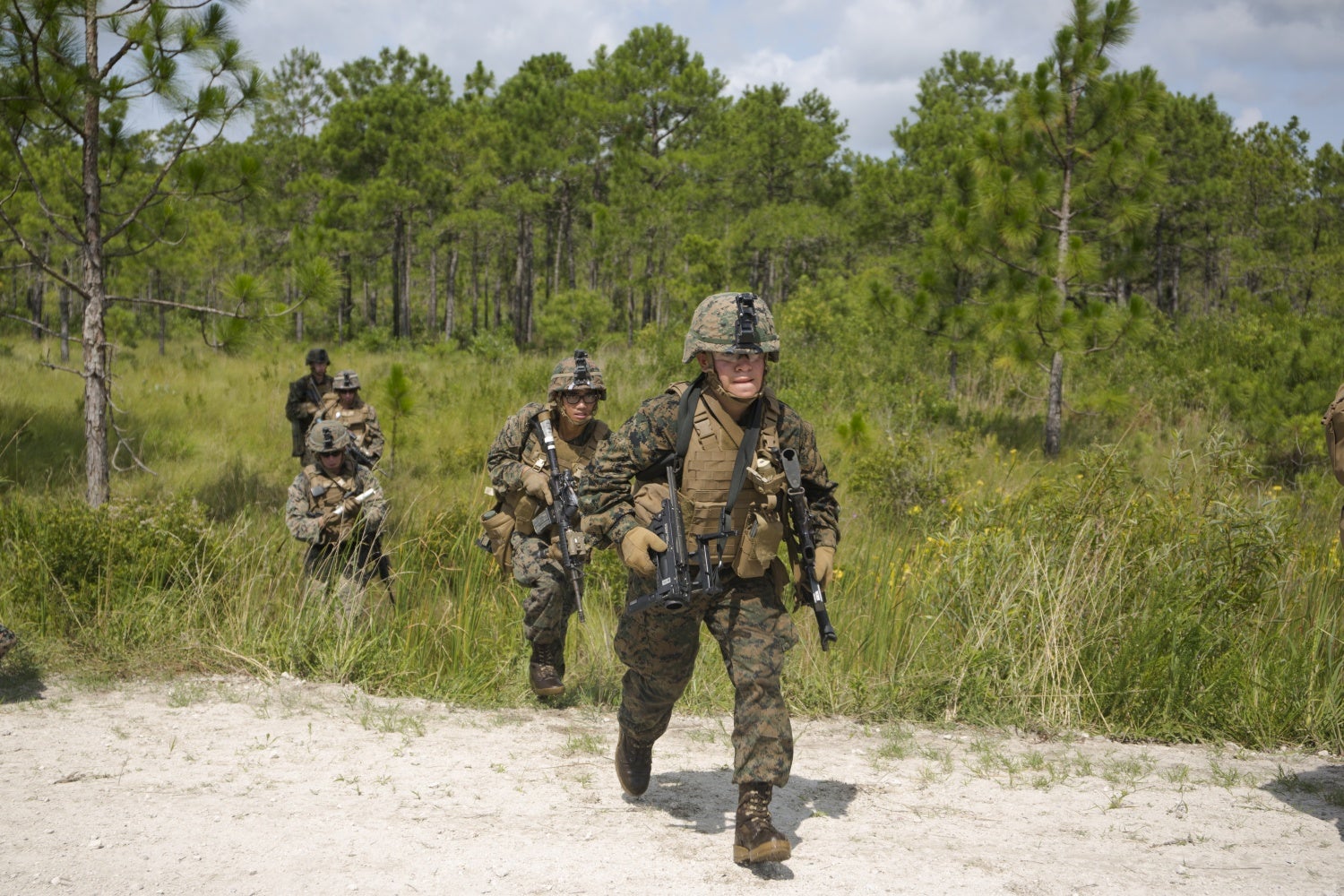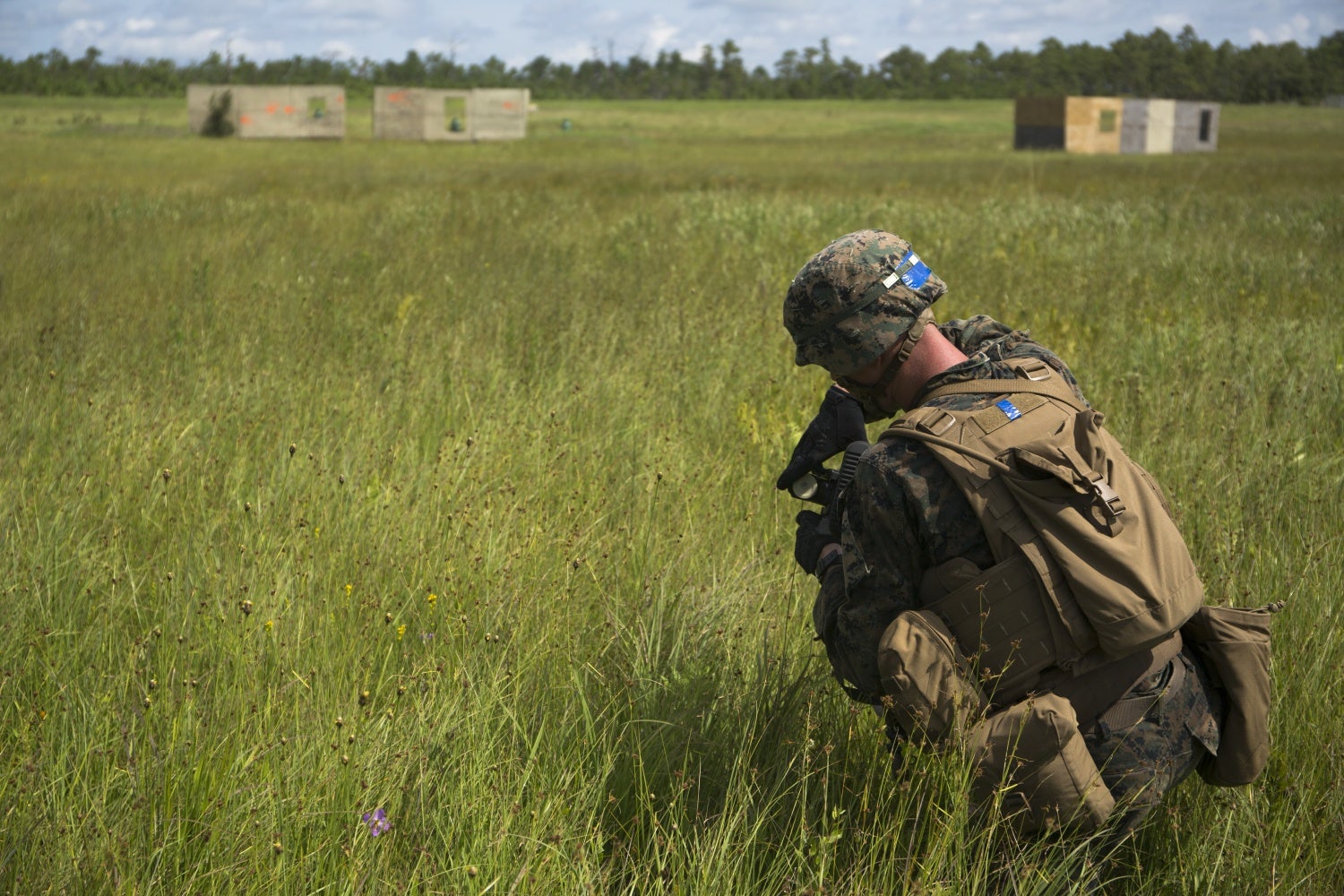The 1/6 “Hard” Über Squad that Marine Infantry Gunner (WO5) Wade put into motion some months ago has taken on Golf Six, a live fire range in Camp Lejeune, North Carolina. 1/6 is trialing several new pieces of kit, most importantly M27 IARs as a standard squad issued rifle, in addition to suppressors mounted to an entire squad’s weapons. Not discussed earlier but seen here is the addition of new ballistic helmets, squad level communications with every Infantryman, and a new plate carrier separate from currently issued ones. Alongside this Über squad were photographs of other squads that weren’t as lucky to receive all the latest in gadgets and gear.
Golf Six is a relatively simple range compared to some of the other live fire ranges available at Lejeune such as Fox Two Five, or Lima Five which are much more complex in their length and safety aspects. This leads me to believe that 1/6 chose Golf Six in particular because it wanted to start with basic fire team rushes and simple coordination of the new equipment before moving on to more complex live fire ranges and situations.
M27 Armament and Magazines
Although the squad isn’t completely armed with M27s, it does have more than the standard one automatic rifle per fire team that a typical Infantry squad would be used to. The M27s it does have are outfitted with Surefire SOCOM suppressors, although not all members are actively using the suppressors during the live fire attack. The rest of the squad does have M4s outfitted with suppressors, but we don’t know if these are M4 or M4A1 variants. Despite promises that Marines might be getting Magpul PMAGs, the hard chargers of 1/6 are still stuck with STANGs, unlike their colleagues in 3/5 that are entirely outfitted with them, currently in Australia on the 31st MEU.
Having a squad entirely composed of M27s will lead to an interesting change in tactics. Instead of having a dedicated gunner per fire team, the squad can actually depend on any member of that team to lay down suppressive fire while another team is assaulting an objective.
Headsets for the entire squad
Instead of wearing the standard ACH helmet not issued among Marines, this squad has a new ballistic helmet outfitted with Hi-Threat Tier 1 headsets and mics. This allows every member of the squad to communicate on multiple channels. Unlike previously where at most just the fire team leaders would have communications abilities, now the squad can operate with more fluidity and purpose because every Infantryman has the ability to be on the same page. With this concept brings new issues such as deconfliction. The headsets also bring in noise canceling abilities which are an awesome capability when dealing with small arms and vehicles that produce high amounts of noise.
At least some of the squad members have the Invisio V60 multi-communication control unit, a very small, lightweight gear mounted system that can allow a single user to broadcast on four communications devices, either individually or simultaneously. The unit is actually very interesting and is covered by PEO Soldier as part of their Tactical Communication and Protective System (TCAPS) program.
The product itself-
In this photograph, the squad leader is using a black PRC-153 to communicate to others (most likely support elements that he is waiting on to start the attack), instead of a green PRC-152. This means that the helmet comm set up is either using green PRC-152s that every squad member has (or a substitute radio system), or his headset is down for some reason.
New Plate Carrier
Also present in the Uber squad was a new plate carrier, different from the currently issued KDH Defense Systems design, and the KDH Defense Systems Modular Tactical Vest (IMTV) that are in active use throughout the Fleet and Reserves. You can tell by the design of a zipper section on the back, and the front chest panel that is entirely taken up by Velcro sections instead of the single deployment patch section common on currently issued plate carriers. The carrier design is actually a Crye Precision Adaptive Vest System (AVS), availible in numerous formats and configurations, this one in Coyote Brown. These vests are routinely used by MARSOC. In addition, the helmets in use by the squad are Ops Core FAST Ballistic helmets.
This is the currently fielded version on a separate squad, from the same company-
Development is currently taking place on a Plate Carrier Generation III, the prototype has an entirely different cumberbund attachment system, different polymer clips, and doesn’t have the MOLLE interweave made out of canvas.
H&K M320 Grenade Launchers
Also seen in this live fire attack was the use of Heckler & Koch 40x46mm low-velocity M320s that recently have found acceptance by the Marine Corps to replace the aging M203s in service. In this particular attack, Infantrymen are using them as a standalone system as compared to being mounted on the Picatinny rail of an M4 or M27 IAR. Carrying it standalone makes it slightly easier to manipulate in a firing position, but it makes running from positions harder, in addition to engaging point targets with the primary M4 or M27 and then switching to area targets with the M320.
TFB reader John S. helped make this article possible with his knowledge of communications and armor systems.
 Your Privacy Choices
Your Privacy Choices
